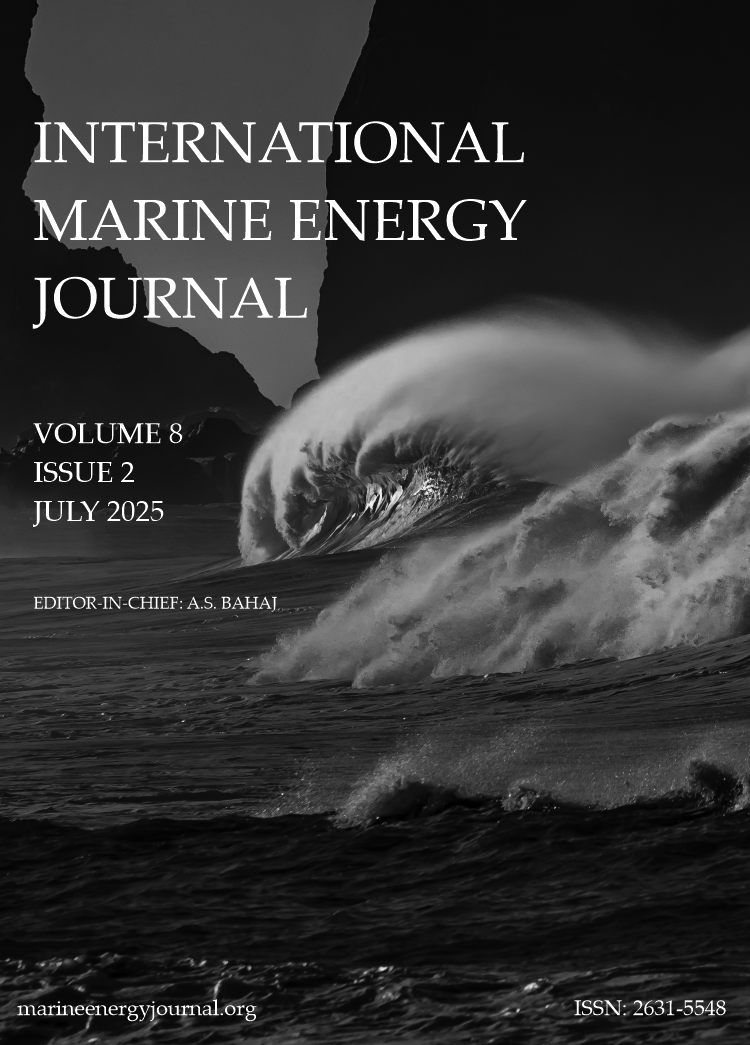On tidal array layout sensitivity to regional hydrodynamics representation
DOI:
https://doi.org/10.36688/imej.8.227-236Keywords:
Optimisation sensitivity, tidal array micro-siting, tidal stream energyAbstract
Hydrodynamic models are required to predict the power produced by a tidal array and the impact on the surrounding environment. The influence of common model inputs to layout optimisation are investigated herein. This is achieved using a shallow water equation based tidal array modelling framework, Thetis, coupled with a low cost analytical wake model (FLORIS) that allows for rapid assessment of the impact of small changes in hydrodynamic results on array micro-siting. The sensitivity of
array optimisation at an intermediate development point (43 turbines) is interrogated through both artificial flow field manipulation and variation of inputs pertinent to optimisation. A small margin exists in which an optimised layout performs efficiently for a deviation in flow prediction accuracy. However, incorrect flow predictions by a range sensitive to model inputs led to a ≈5% variation in array efficiency relative to a control case. The sensitivity of flow field variance on energy yield and layout are substantial. Comparing arrays sited using different bathymetry resolution models leads to a discrepancy on average of almost 2% to average array power. Arrays sited for different mesh resolution and friction representation also changes exceeding 0.85%. For array developers and the future of this nascent industry, acquisition of reliable bathymetry data coupled with repeated calibration of array models is critical for accurate array power and efficiency.
Downloads
Published
How to Cite
Issue
Section
License
Copyright (c) 2025 Connor Jordan, Daniel S. Coles, Fraser Johnson, Athanasios Angeloudis

This work is licensed under a Creative Commons Attribution 4.0 International License.
I the author/we the authors understand that I/we retain copyright over our article. I/we grant a licence to IMEJ to: publish my/our article under the terms of the Creative Commons Attribution (CC BY) License which permits use, distribution and reproduction in any medium, provided the original work is properly cited, and identify IMEJ as the original publisher.


